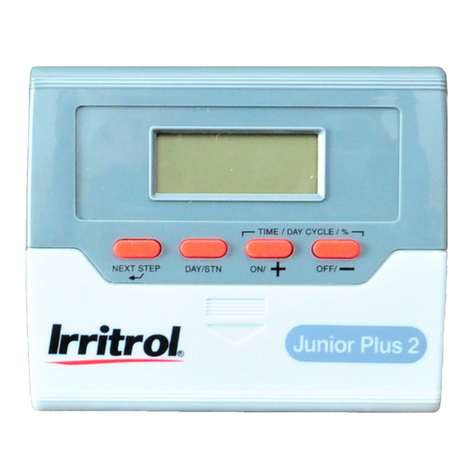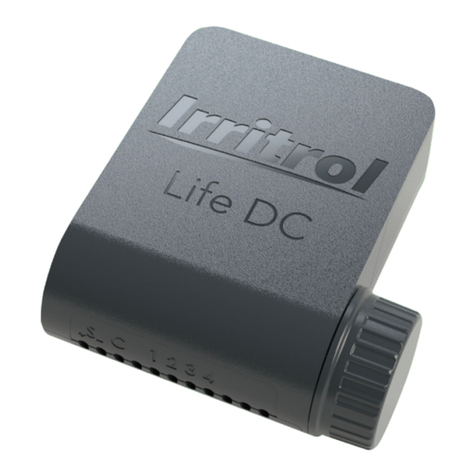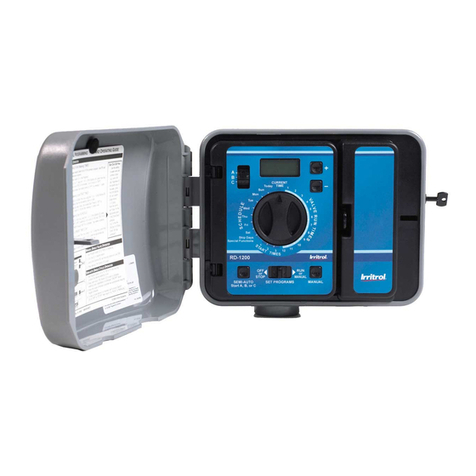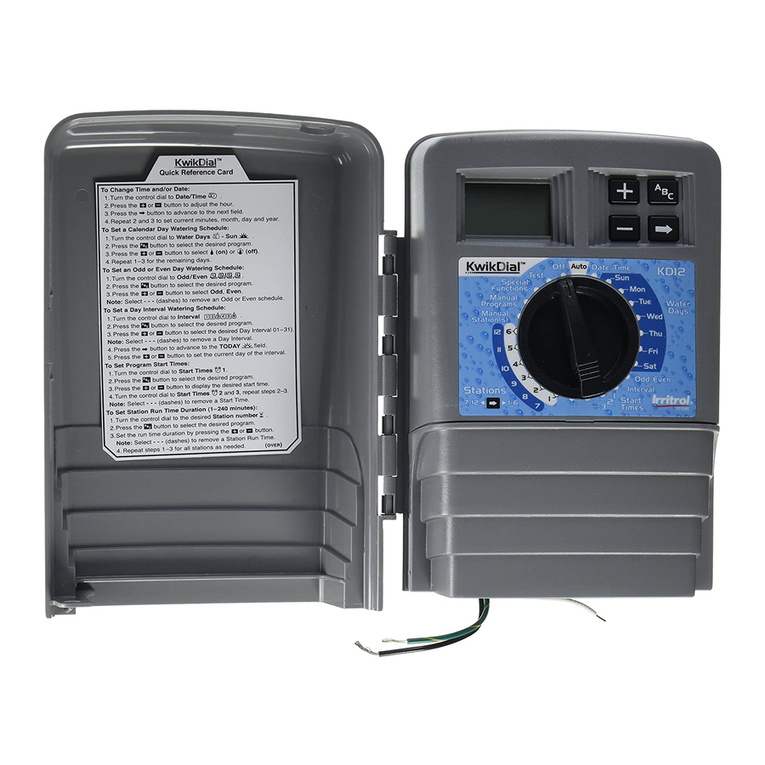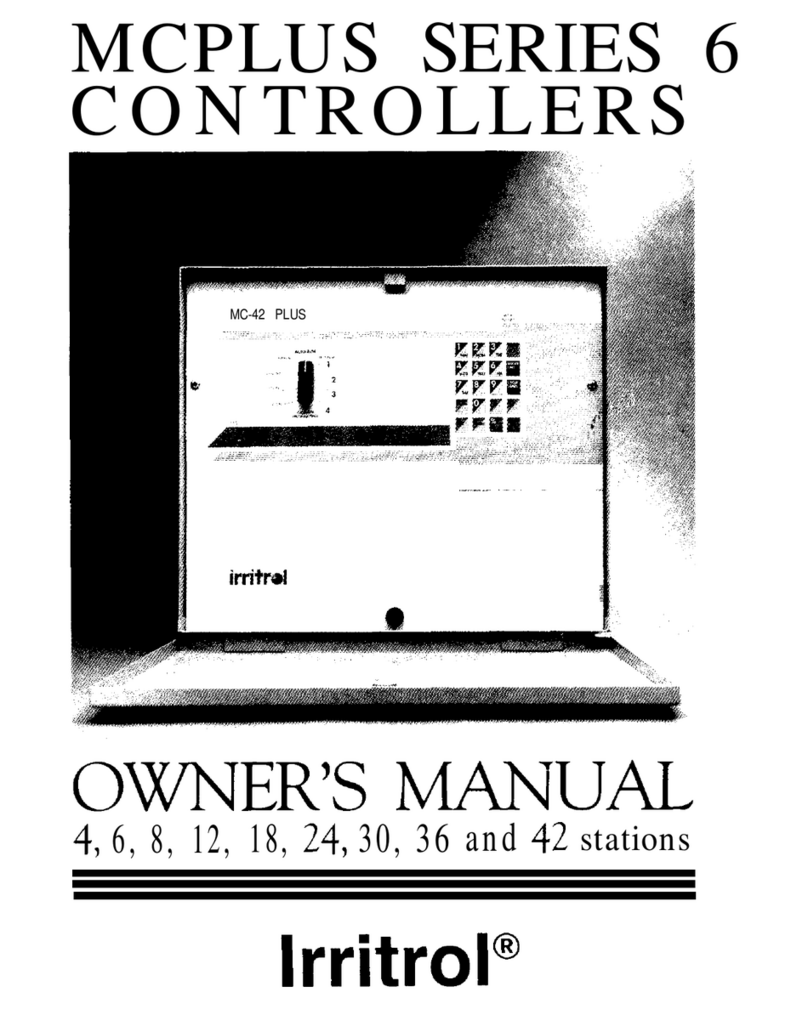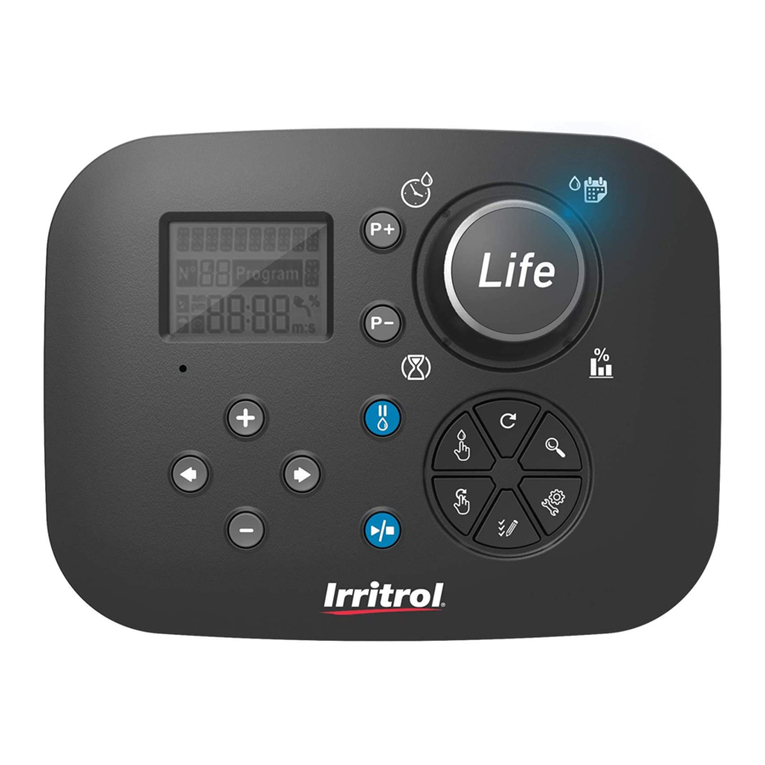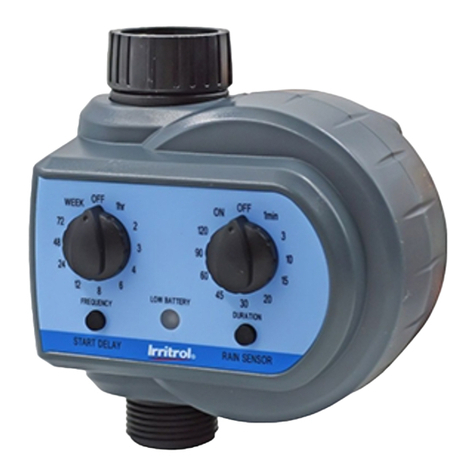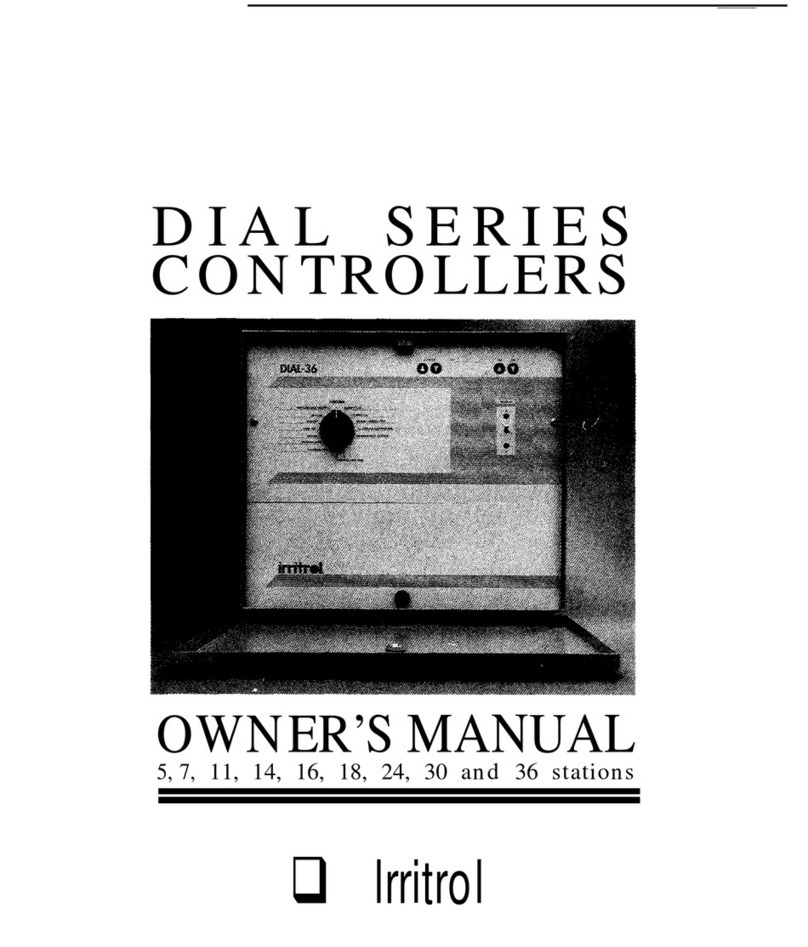
To take full advantage of your new Rain Dial-R controller, take a few
moments to become familiar with its many features:
• Modular design – Provides easy access to valve connection termi-
nals and battery storage. Snap-out design enables the control mod-
ule to be easily removed for “Armchair Programming.”
• CLIMATE LOGIC®ready - Built-in RJ-11 jack for direct connection
of the CLIMATE LOGIC weather sensing system. (CLIMATE LOGIC
automatically alters the controller’s watering time based on the
weather. Using the CLIMATE LOGIC accessory earns the Rain Dial-R
controller the EPA WaterSense®label.)
• Remote control ready – Built-in RJ-11 jack for direct connection
to Irritrol R-100-KIT handheld remote control systems.
• Non-volatile memory – Keeps all user-defined watering programs
stored in memory for several years—without power!
• “Super Cap” – Provides a backup power source to sustain current
time and date during a power outage lasting up to 24 hours.
• Battery back-up – Maintains the current time and date during
a power outage lasting longer than 24 hours. Enables “Armchair
Programming” of the controller prior to installation.
• Three independent watering Programs – Enables automatic
watering Programs to be specifically tailored for various portions of
the landscape; e.g., lawns, shrubs and trees.
• Three Start Times per Program – Enables operation of each
automatic Program up to three times per scheduled watering day.
• Skip Days scheduling – Enables watering days to be scheduled by
interval, ranging from 1 (everyday) to 31 (once every 31 days).
• Odd/Even date scheduling – Enables a watering day schedule to
be defined by all odd- or even-numbered calendar days.
• Day Exclusion – Enables specific weekdays to be excluded from an
Odd/Even date or Skip Days watering schedule.
• Program Stack/Overlap – Provides the option to limit operation
to one Program/station at a time (Stack), or enable up to three
Programs or stations to operate concurrently.
• Station Test Feature – A convenient test-cycle feature operates
each valve station in sequence for a selected run time from 1–10
Getting to Know your Rain Dial-R Controller
2

